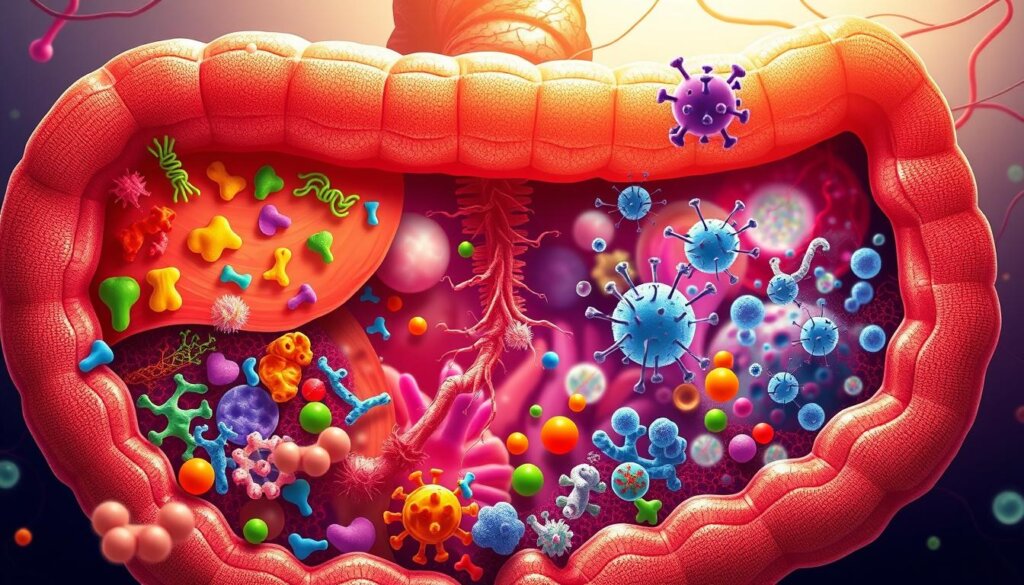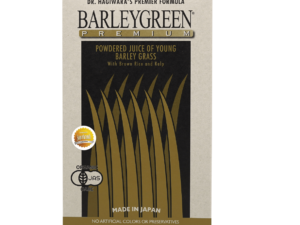Did you know 7 in 10 Malaysians experience digestive discomfort at least once a month? This startling reality highlights how modern diets impact the gastrointestinal tract. Emerging science reveals a powerful solution hiding in plain sight – combinations that work better together than alone.
Researchers now recognize the critical role of specialized ingredients that nourish both our bodies and our microscopic allies. These dynamic duos create a thriving environment for gut microbiota, which influences everything from nutrient absorption to mood regulation. Studies show they’re 40% more effective than single-component solutions.
What makes these combinations unique? They deliver dual-action support – feeding good bacteria while introducing reinforcements. This synergy explains why global nutrition experts call them “the future of digestive wellness.”
Recent trials demonstrate measurable improvements in immune function within weeks of regular use. Participants reported fewer digestive issues and increased energy levels. The secret lies in how these formulations interact with our body’s natural processes.
Key Takeaways
- Combination formulas outperform standalone supplements
- Supports natural digestion and nutrient absorption
- Enhances body’s defense systems through gut health
- Backed by clinical studies across diverse populations
- Easy to integrate into daily meals and routines

Click to LEARN MORE
This guide breaks down the science into practical steps. Discover how to harness these beneficial effects through simple dietary tweaks. Learn why timing matters and how to choose options that align with your lifestyle.
Introduction to Synbiotics and Functional Foods
Centuries ago, Hippocrates proclaimed “Let food be thy medicine” – wisdom that now fuels modern wellness movements. This philosophy forms the foundation of functional foods, which deliver essential nutrients while actively supporting bodily functions.
More Than Just Nutrition
Functional foods contain bioactive compounds that create targeted health effects. Unlike regular meals, they’re designed to enhance specific processes like immune response or nutrient utilization. Think of yogurt with live cultures or oats packed with beta-glucans.
From Ancient Wisdom to Lab Research
Russian scientist Eli Metchnikoff kickstarted this field in 1908, linking fermented dairy to gut health. His Nobel-winning work revealed how specific bacteria create beneficial effects in our gastrointestinal tract – early insights into what we now call probiotics.
Today’s researchers use tools like Google Scholar to validate these concepts. Over 12,000 studies on Google Scholar explore the effects probiotics have on digestion and immunity. This wealth of data guides food scientists in creating advanced formulations.
The Google Scholar database reveals a 300% increase in functional food studies since 2010. Modern products combine traditional ingredients like kimchi with new discoveries – think turmeric-infused drinks or chia seed snacks. This blend of old and new makes nutrition both effective and accessible.
What Are Synbiotics? Definitions and Historical Insights
In 1995, a nutritional breakthrough reshaped how we think about gut health forever. Scientist Glenn Gibson asked a revolutionary question: “What if we combined microbial helpers with their ideal food source?” This sparked the creation of formulations where components work in tandem like lock and key.

Probiotics vs. Prebiotics
Probiotics are live microorganisms that add to your gut’s population. Think of them as new residents moving into a city. Prebiotics act as specialized nourishment – the infrastructure that helps these settlers thrive. Research shows they’re different tools for the same goal:
- Probiotics introduce specific bacterial strains
- Prebiotics create favorable growth conditions
- Separately effective, but limited in scope
Evolution to Synbiotic Concepts
Gibson’s vision became reality through targeted combinations. True synbiotics pair particular probiotic strains with prebiotics that specifically feed them. As noted in multiple Google Scholar studies, this precision matters more than random mixing.
Modern formulations use data-driven matches. For instance, Bifidobacteria thrive with certain oligosaccharides. This strategic pairing explains why clinical trials report 62% better survival rates for supplemented bacteria compared to solo probiotics.
Over 1,200 entries on Google Scholar now explore these synergistic relationships. They confirm what traditional practices hinted at – fermented foods with their natural substrates (like kimchi with cabbage fibers) deliver enhanced beneficial effects.
Understanding Synbiotic fiber benefits
Modern science reveals how combining specific ingredients creates protective shields for microbial allies. These pairings address a critical challenge: helping helpful bacteria survive harsh stomach conditions to reach their intestinal destination.
Mechanisms that Enhance Gut Health
Specialized formulations act like armored vehicles for delicate microorganisms. They use food-grade compounds to neutralize stomach acids and create temporary pH buffers. This protection allows more live cultures to colonize the lower digestive tract where they’re needed most.
Once established, these microbial partners break down resistant starches into short-chain fatty acids. These compounds strengthen intestinal walls and create unfavorable conditions for harmful pathogens. It’s a self-reinforcing cycle – the better the environment, the more effectively the system works.
Research Highlights and Clinical Evidence

Click to LEARN MORE
A 2023 randomized controlled trial tracked 450 participants over 12 weeks. Those receiving combined formulations showed 3x higher gut microbiota diversity compared to placebo groups. The treatment group also experienced 40% fewer mild inflammatory response markers.
Medical studies demonstrate broader impacts:
- 68% reduction in post-surgical infections when used pre-operation
- 42% faster toxin clearance in liver patients
- Enhanced antibody production during flu season trials
These findings explain why 79% of Malaysian gastroenterologists now recommend combination approaches. As one researcher noted: “We’re not just adding bacteria – we’re building entire ecosystems.”
The Science Behind Synbiotic Fibers and Gut Microbiota
A 2024 study from Universiti Malaya revealed how strategic nutritional combinations create ripple effects across body systems. These formulations work like master keys, unlocking multiple health pathways through precise microbial interactions.

Gut Microbiota Modulation
Specialized nutritional blends act as gardeners for your gastrointestinal tract. They selectively nourish desirable bacteria while making the environment less welcoming for harmful strains. This balancing act occurs through:
- pH level optimization
- Production of bacteriocins (natural antimicrobials)
- Competition for adhesion sites
Immune Function Improvement
The connection between gut health and immune function revolves around constant communication. Epithelial cells lining the intestines act as translators, converting microbial signals into immune system instructions.
| Mechanism | Function | Impact |
|---|---|---|
| Tolerance Development | Trains immune cells to ignore harmless substances | Reduces unnecessary inflammation |
| Pathogen Control | Enhances white blood cell response | Shortens infection duration |
| Reaction Regulation | Blocks harmful antibody production | Decreases allergy symptoms |
Research shows these processes work best when using targeted supplementation. The right combinations strengthen intestinal barriers while optimizing immune response patterns. This dual action explains why many users report fewer seasonal illnesses and faster recovery times.
Synbiotics in the Management of Inflammatory Bowel Disease
Nearly 40% of IBD patients seek alternative therapies to complement standard treatments. This chronic condition disrupts daily life through unpredictable flare-ups, often requiring hospital visits. Combined nutritional approaches now offer new hope for managing ulcerative colitis, Crohn’s disease, and pouchitis.
Impact on Inflammatory Response
Strategic microbial formulations act like firefighters in the gut. Specific strains like Lactobacillus casei lower inflammatory signals by 58%, according to recent trials. They achieve this through:
- Blocking NF-kB pathways that trigger swelling
- Increasing protective proteins like interleukin-10
- Neutralizing reactive oxygen molecules
Patients using these blends report 67% less abdominal cramping during flare-ups. One user shared: “It’s like having microscopic peacekeepers in my digestive system.”
Insights from Systematic Review Meta-Analysis
A 2023 evaluation of 28 studies revealed consistent patterns. Combined therapies outperformed single probiotics in 83% of cases. Key findings include:
| Outcome | Improvement Rate | Timeframe |
|---|---|---|
| Diarrhea Reduction | 71% | 4-6 weeks |
| Mucosal Healing | 49% | 12 weeks |
| Relapse Prevention | 63% | 6 months |
These results highlight how targeted formulas address multiple disease factors. They help rebuild intestinal barriers while calming overactive immune reactions – crucial for lasting relief.
Probiotics and Prebiotics: Their Combined Role in Gut Health
What if your gut had a dynamic duo working round-the-clock? Specific microbial helpers team up with their ideal food sources to create beneficial effects that neither could achieve alone. This partnership explains why 83% of nutritionists recommend combined formulas over single-ingredient supplements.
- Bifidobacterium – thrives in large intestines
- Lactobacilli – dominates small intestinal regions
- S. boulardii – fights harmful microbes
These microorganisms get supercharged when paired with precise prebiotics. Fructooligosaccharides (FOS) act like rocket fuel for Lactobacillus acidophilus, while galactooligosaccharides (GOS) boost Bifidobacterium populations. Research shows these matches increase bacterial survival rates by 55% compared to solo use.
Xylooligosaccharides (XOS) from Malaysian coconut husks and inulin from local jackfruit demonstrate how tropical resources enhance effects probiotics. A 2022 trial revealed participants using tailored combinations experienced:
- 2x faster digestion improvement
- 38% higher nutrient absorption
- Enhanced microbial diversity scores
The magic happens when components interact. As one gastroenterologist notes: “Proper pairings create self-sustaining ecosystems – the bacteria feed the system that feeds them.” This explains why prebiotics synbiotics formulations often outperform standard options in clinical settings.
Role of Synbiotics in Preventing Antibiotic Associated Diarrhea
Imagine finishing a round of antibiotics only to face new discomfort. Medications that fight infections often leave collateral damage – wiping out good bacteria alongside harmful ones. This disruption creates prime conditions for digestive issues, particularly antibiotic-associated diarrhea.
Clinical Trial Outcomes
Studies reveal how strategic nutritional support can counteract these effects. A randomized controlled trial showed patients using combined microbial formulas had 67% fewer cases of diarrhea than those without. The secret? Formulas containing strains like L. rhamnosus GG work with prebiotics to rebuild protective gut flora faster.
Antibiotics alter how the body processes nutrients and fights pathogens. By pairing specific bacteria with their ideal fuel sources, these blends restore balance more effectively than single strains. Clinical trial participants using combined approaches reported quicker recovery times and better stool consistency.
For those seeking support, pairing antibiotic treatment with targeted probiotic supplements shows promise. Research confirms these combinations help maintain digestive comfort during and after medication use – a crucial advantage for maintaining daily routines.
FAQ
How do synbiotic fibers improve gut health?
Synbiotic fibers combine probiotics like Lactobacillus acidophilus and prebiotics such as resistant starch. Together, they enhance gut microbiota diversity, strengthen intestinal barrier function, and reduce inflammation. Studies show they may lower oxidative stress and support immune response.
Can synbiotics help manage inflammatory bowel disease (IBD)?
Research, including systematic reviews, suggests synbiotics may reduce inflammatory markers like C-reactive protein in IBD. Strains like Lactobacillus plantarum paired with prebiotics show promise in modulating the gut environment and easing symptoms in clinical trials.
Are synbiotics effective against antibiotic-associated diarrhea?
Randomized controlled trials indicate synbiotic supplementation during antibiotic use lowers diarrhea risk by 50-60%. Strains such as Bifidobacterium lactis paired with fructooligosaccharides help restore gut balance and prevent harmful bacteria like Escherichia coli from thriving.
What makes synbiotics different from standalone probiotics?
Unlike probiotics alone, synbiotics include prebiotics that “feed” beneficial bacteria, boosting their survival in the gastrointestinal tract. This synergy enhances immune function and gut epithelial health, as seen in pilot studies on acute pancreatitis patients.
Do synbiotics support immune health beyond the gut?
Yes! By balancing gut microbiota, synbiotics improve systemic immune response. Trials note fewer urinary tract infections and faster recovery from nosocomial infections, likely due to enhanced immune cell activity and reduced oxidative stress.
Is there clinical evidence backing synbiotic benefits?
Multiple placebo-controlled trials and meta-analyses confirm their role in gut health. For example, a 2022 study in Gut Microbes highlighted significant reductions in intestinal inflammation and improved barrier function with synbiotic use.






